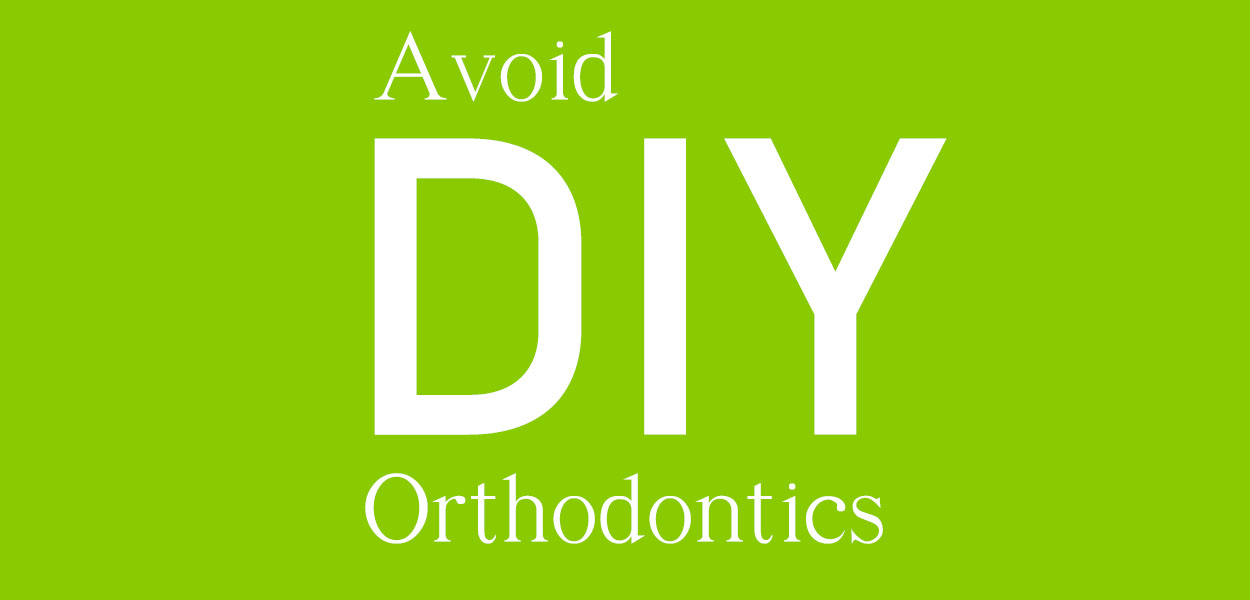Avoid DIY Orthodontics and Quick Fixes


I’ve got a space between my front teeth that I’ve hated my entire life. I don’t want to get braces just to fix the gap, but a friend recently told me about a video she saw on YouTube, where a woman closed the gap between her teeth with just some rubber bands. It sounds pretty easy, and it would be cheap and save me the headache of having to wear braces and schedule orthodontic appointments. My mom says no way, but I think it’s worth a try. What do you think?
Carla M.

Whatever you do, DO NOT attempt to close your gap on your own. Sure, the internet is full of do it yourself projects that seem simple enough. But, cutting your own hair or building a table made from leftover pallets won’t cause lasting damage to your smile. DIY orthodontics certainly can. See this post with two other people asking the same question about DIY Orthodontics.What you don’t see on these videos, which are made by people just like you who are not trained in orthodontics, is that attempting to close a gap on your own can lead to gum damage, infection and even loss of teeth.If someone tells you that perfecting your smile is as easy as using a few rubber bands, or some dental floss and hair ties, they are lying. No matter how convincing a video may be, attempting to straighten your teeth at home without the expertise of a trained and certified orthodontics is dangerous.
First, the rubber bands might not stay in place. They can shift and work themselves up into your gumline, which can damage your tooth. Your teeth are connected to the gums and blood supply. Damaging this connection can lead to a risk of infection, or tearing of your gums. You can also damage the connection from the gums to the tooth, which can lead to tooth loss.
Another problem is that, while you might not like the gap between your front teeth, simply attempting to fix that can create an even worse orthodontic issue. If you only shift a few teeth, you can damage the efficiency of your bite, which can lead to abnormal tooth wear and breakage, and even headaches. Think of it this way – if you close a gap between two teeth without doing anything to the other teeth, you’re just creating a gap somewhere else in your mouth.
But closing gaps using just rubber bands isn’t the only dangerous trend we’re seeing. There are now companies that offer clear aligners through the mail. You simply take a photo and make an impression of your teeth, send them in, and a group of aligners come to your mailbox.
The problem with this is that aligners aren’t a one size fits all solution. Clear aligner therapy is not always an appropriate option for my patients. And that can be for a variety of reasons, such as the malocclusion is too complicated, or there are underlying oral health issues that will interfere with orthodontic treatment.
But when it is appropriate, you can receive professional treatment with iDentity Clear Aligners for the same price as these DIY mail-in programs. With that being said, why trust your smile to the mailman…
There are so many questions people need to ask before attempting these DIY mail-in orthodontics. How do you know who is making your diagnosis and sending the aligners? Is someone with actual orthodontic experience looking at your case to ensure you are getting what you actually need? Who is directing your treatment to help you along in the process?
Before an orthodontist begins braces treatment, he or she does thorough examinations that include X-rays, photos, impressions, and a physical exam. This gives us the information we need to make a proper diagnosis and to then create a treatment plan that will properly address your needs.
If you attempt to correct your smile on your own, you miss out on the knowledge and expertise of the orthodontist, who can not only give you a prettier smile, but ensure it is also one that functions properly, too. Not only that, you put your smile at serious risk.
When it comes to orthodontics, only trust a certified and experienced orthodontist.
Sincerely,
Dr. S.


